The pebbled path to planets
Astronomers are turning to ‘dust’ and little rocks to figure out how planets form
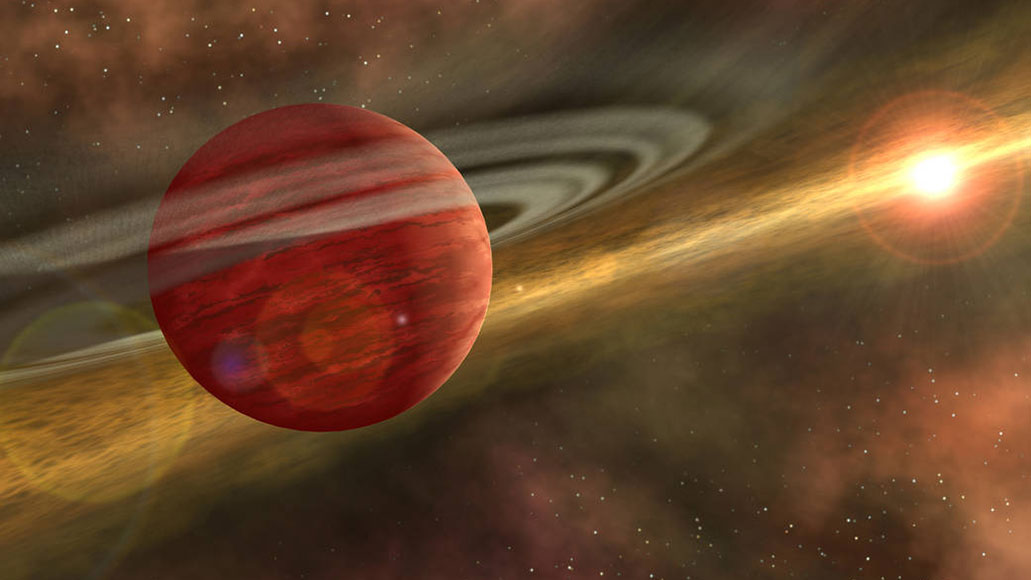
Artist and astronomer Robert Hurt at Caltech created this illustration of a possible newfound planet near the star CoKu Tau 4. It’s forming in a clearing in the star's dusty, planet-forming disc. The possible planet could be at least as big as Jupiter, and may look like the giant planets in our solar system when they were young.
R. Hurt (SSC-Caltech)/JPL-Caltech/NASA
Every big planet begins with a pebble.
Okay, not just one. It starts with lots of pebbles — a flat sea of them stretching perhaps hundreds of times wider than the distance from Earth to the sun. Their sizes vary greatly. Some may be mere dust particles. Others may be small to fairly substantial rocks.
These pebbles tumble violently within the gassy disk encircling a young star. Lurking within that disk are the ingredients not only for planets, but also for asteroids, comets and living things. What they become depends not only on those ingredients, but also on their location and the temperature of the gas.
Like fussy chefs in a kitchen, astronomers today debate over how much of which ingredients must have been present in that early solar system. And when. And how they might have interacted and combined. And what would happen if you changed their temperature.
We all know how the planet-making process ends. It produces rocky worlds like Earth, Mars and Venus. It also leads to gas giants like Saturn and ice giants like Uranus. Outside the solar system, the planetary zoo includes stranger worlds. Scientists have spotted a world that they first thought was made of diamond but now believe has oceans flowing with lava. They’ve observed a hot gas giant where drops of iron probably fall like rain and a small hot planet enshrouded in steam.
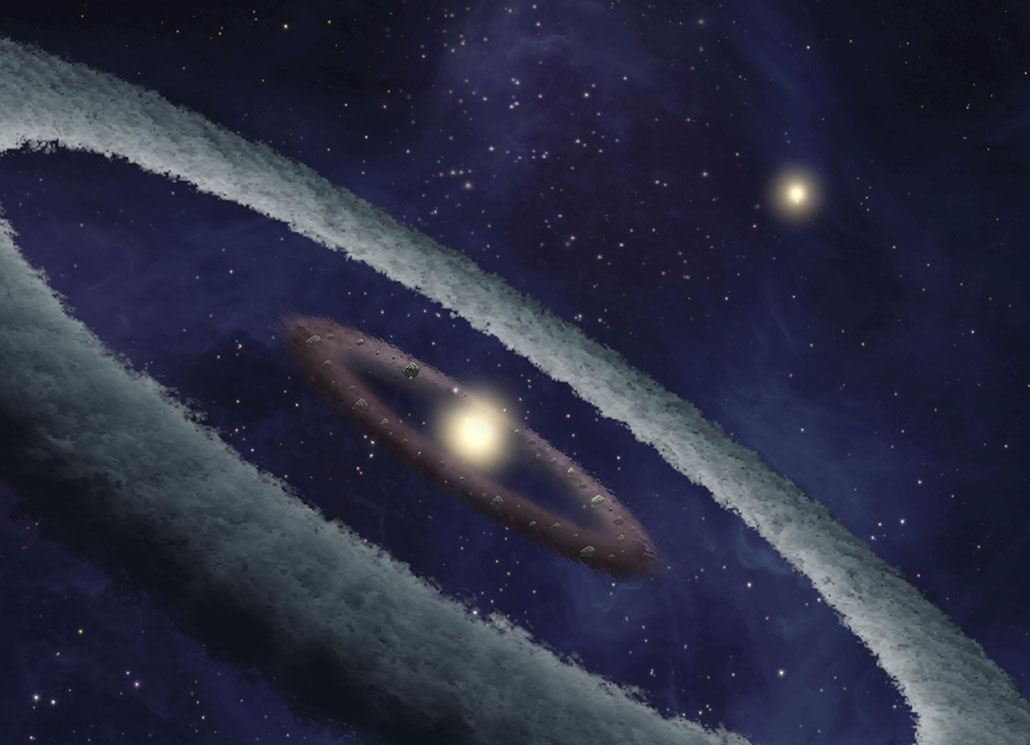
But how disks of gas and rocks become planet factories is still under debate. The beginnings — where dust grains barely micrometers (a few ten-thousandths of an inch) across stick together to form rocky solids — isn’t too controversial. And thanks to powerful telescopes, researchers have ideas for how planets move once they’re fully-formed.
But in-between is a doozy. For centuries, scientists have been testing and fighting over ideas about how to connect the beginning to the end. Most of the seemingly best ideas have run into problems.
Over the last 10 years or so, however, a process called pebble accretion (Ah-KREE-shun) has gained popularity. Accretion refers to something’s gradual growth. This occurs as new bits of material join something or glom onto it. In this case, it’s a swirling disk of gas and pebbles that clump together to form a family of planets.
According to the theory, tiny rocks in the disk slow and heat up as they fly through the gas near a larger rock. It’s a phenomenon similar to how water in a pond slows a sinking rock. These flying pebbles eventually spiral down to land on the surface of larger rocks nearby. Pebble by pebble, a giant planet is born. And compared to the age of the universe, it’s a fast process, only taking a few million years.
“Pebble accretion really did revolutionize the way that people thought about planet formation,” says Katherine Kretke. She’s an astrophysicist at the Southwest Research Institute in Boulder, Colo.
This theory would solve many of the riddles that challenged previous ideas. For example, says Seth Jacobson, “It is really the only mechanism that comes close to explaining how Uranus and Neptune formed.” Jacobson is an astrophysicist at Michigan State University in East Lansing.
Planet accretion also has gotten a boost from recent studies of distant stars. Observations by the largest radio telescope network in the world, perched on a lonely desert mountain in Chile, match up with some of this theory’s unusual predictions.
Anders Johansen, an astronomer at Lund Observatory, in Sweden, knows a lot about pebble accretion. He has been one of the leading researchers arguing in its favor. Puzzling out how it might work consumes his days.
He compares studying the origins of planets to working through a detective story. The solar system provides clues in the planets we know, he says. Exoplanets beyond the solar system provide more clues. Scientists have to connect those clues to piece together the whole story.
“It is just so much fun to work on this,” he says.
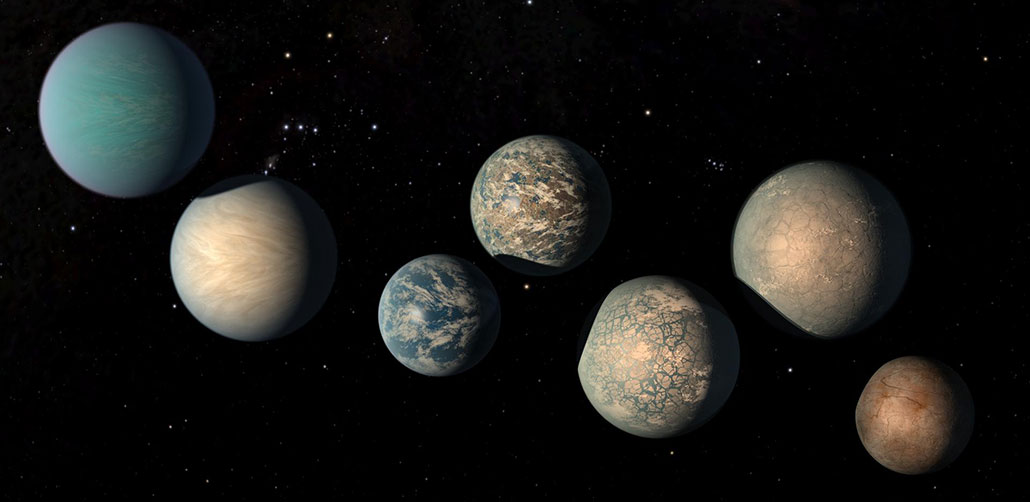
In the beginning
Ancient Greek philosophers believed that planets formed from the chaos that filled the universe. In the 17th century, French scientist and philosopher René Descartes suggested that every star sat at the center of a swirling vortex. Planets, made of darker stuff, rested in concentric bands that circled the star.
In the 18th century, a Swedish mystic named Emanuel Swedenborg proposed a different idea. He described planet formation in a way that’s closer to modern ideas. The whole thing begins, he said, when the crusty shell around a star explodes. It crumbles. The debris settles into a giant ring encircling that star at its center. Material in that ring eventually clumps into what will become planets. The idea that the planets formed from a swirling cloud of star stuff is called the nebular hypothesis.

Educators and Parents, Sign Up for The Cheat Sheet
Weekly updates to help you use Science News Explores in the learning environment
Thank you for signing up!
There was a problem signing you up.
That remains the backbone of ideas today. It also has led to the creation of a long list of new words. Dust doesn’t refer to the stuff in your house — that mix of dead skin cells, bits of cobwebs, dirt and more. It’s the tiny particles too small to see with the eye. When scientists say pebble, they mean small rocks from about the size of a dime up to the size of a sled. They also talk about planetesimals (Plaa-neh-TES-ih muls). These are space rocks that might be as big as a city. Then there are protoplanets, a planet that’s almost done forming.
As scientists have hashed out the details, they’ve also run into challenges. One idea popular in the 20th century, for example, proposed that planets formed from the collisions between ever-bigger rocks.
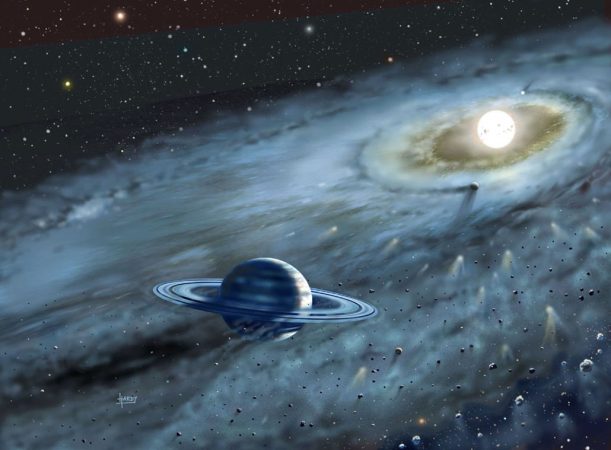
That explanation, too, starts “with a disk of gas and dust,” notes Alessandro Morbidelli. “Then the dust sticks together to form planetesimals the size of asteroids and comets.” Morbidelli is a planetary scientist at the Cote d’Azur Observatory in Nice, France. “Just forget about the dust,” he says. “Then, you produce protoplanets by colliding those planetesimals with each other.”
This process may sound reasonable. However, Morbidelli also believes that’s almost impossible. For one thing, planets that form far from the sun grow slowly. Worlds like Jupiter and Saturn would need tens of millions of years to get so big through smash-ups. But the dust and gas disk from which they were to form only stuck around a few million years. “It seems difficult by this process to grow the cores of these planets within the lifetime of the disk,” he argues.
Another problem: That model requires planetesimals to collide by crossing orbits. “You have all these collisions, all this debris,” says Jacobson. “The current planets don’t look anything like that. We have very nice orbits, almost circular. They don’t look like they came from a violent, messy process.”
Finally, collisions between big objects don’t always produce bigger objects. It’s easy to check this one: Just try smashing one stone into another.
“If you take two fist-sized rocks, there’s no velocity at which you can bring them together and they will stick,” says Jacobson. So collisions alone, he argues, can’t explain how planetesimals form.
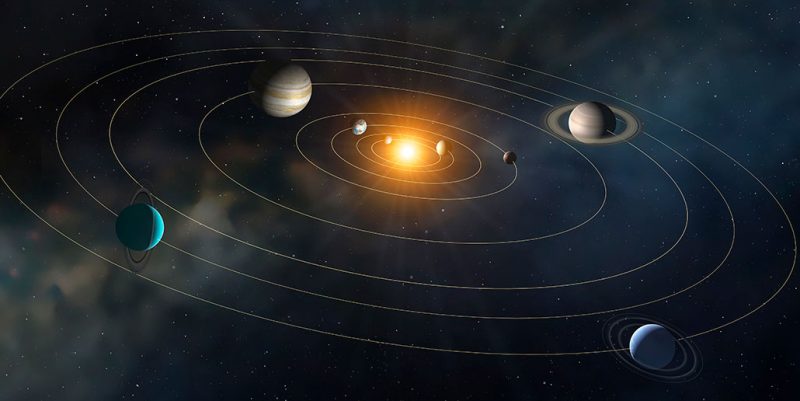
Paying attention to pebbles
In 2010, two astrophysicists at the Max Planck Institute for Astronomy in Heidelberg, Germany, found a workaround. The answer, they suggested, was in the disk’s gas. As it moves through a fluid, a solid object slows and heats up. This is due to a force called drag. Because of drag, you need more effort to walk through water than to walk through air. The drag from gas in a disk would likely slow down the pebbles.
This idea became known as pebble accretion with a study published two years later by Johansen and Michiel Lambrechts, another astronomer at Lund Observatory. They used computer models to test their ideas. In parts of the disk having the right temperatures, those pebbles can slow enough, they found, to spiral down to the surface of a planetesimal. From there they’d stay put.
“It is a really efficient process,” says Kretke. “If you have a ton of these pebbles around at the right size,” she says, “then boom! You can form a planet.”
Two big objects spinning through space have only a small chance of colliding. But for one big object streaming through an ocean of pebbles and dust, a collision is likely. With pebble accretion, a planet can grow as big as Neptune or Uranus during the short lifespan of the gas disk. It doesn’t need giant outer-space smashups of asteroids and comets to form. And once a planet like Jupiter has a big core, its gravity can attract the lighter elements to jacket it in a thick atmosphere of hydrogen and helium.
Pebble accretion does a good job of explaining how big planets form, says Morbidelli. It also suggests that the gas and dust in a disk determine what type of planet forms near a star — or if a planet forms at all.
Or maybe it doesn’t have to be a smooth disk. With pebble accretion, planets may form from misshapen rings of dust and gas that swirl around a star. In 2018, scientists studied some gas and dust orbiting stars. They used the largest radio telescope network in the world, called ALMA. (The name stands for Atacama Large Millimeter Array.) This group of giant, silvery dishes peer into space from atop a desert mountain in Chile’s Atacama Desert.
What they found was shocking. Some stars have rings of dust and gas — not disks. Others have large disks, or small disks. And not all rings were smooth. Some had regions where the dust and gas got stuck and clumped. Other regions seemed sparse.
“We saw such diversity at the disk level,” says Morbidelli.
The challenge now, he says, is to use pebble accretion to connect those ring structures to planets that may emerge.
Problems in pebbleland
Most astronomers agree that pebble accretion is a good explanation for how big planets form. “Nobody questions that,” says Morbidelli. But the complete explanation of how planets form is likely much more complex. Getting pebble accretion to produce planets, even in models, requires other parameters to be just right, he cautions.
For instance, pebble accretion requires a bigger rock onto which the smaller pebbles land. “So we still need collisions of planetesimals to create moon-sized objects before pebble accretion takes over,” he suspects. Disks must also exist filled with plenty of matter to supply all those pebbles. ALMA’s observations suggest such giant disks can exist. But scientists are still collecting evidence to prove that.
Johansen and others also caution that pebble accretion likely falls short of explaining the whole story. A study published this past February showed how planetesimal collisions could have produced Jupiter, no pebble accretion needed. Gennaro D’Angelo at Los Alamos National Laboratory in New Mexico and his colleagues authored the work. Their new paper doesn’t rule out pebble accretion; it just shows that it may not be the only explanation for planets. Scientists still need to explore other possibilities.
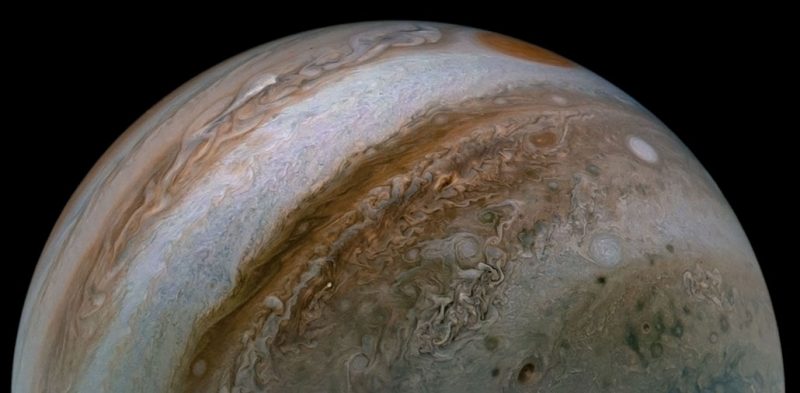
And they are. In a paper published in 2018, scientists combined planets and planetesimals in a kind of hybrid scenario.
Pebble accretion helps explain conditions under which big planets can form, D’Angelo says. But that process depends on getting the timing and temperature just right. Without that, the pebbles might drift too quickly through the disk, he says, and the growing planet “might not have time to accrete them.”
Plus, there’s a Goldilocks issue with pebble accretion. The planet-growing time has to last long enough to allow a stream of pebbles to land onto the core. But observations of other systems show that disks don’t last forever. They often last only a few million years. And that puts a deadline on planet formation. So a planet can’t grow too fast or too slow — or it won’t form at all.
Can pebbles lead to Earths?
Another lingering question about pebble accretion is whether it can form small, rocky worlds such as Earth and Mars.
Johansen thinks it can. In a February paper in Science Advances, he and his colleagues describe a model that shows how a stream of pebbles might do this. Pebbles collect on planetesimals at about the same distance from the sun as Mars is today. After the planets form, they migrate — or drift over time — into their current positions.
Morbidelli has his doubts. “Personally, I think that somehow the giant planets grew by pebble accretion. But the terrestrial [rocky] plants,” he believes, “were mostly immune.” Jupiter is the solar system’s oldest planet. And as it grew, it blocked the flow of pebbles toward the inner solar system. That would have left no more pebbles to build the rocky planets. The solar system’s inner planets, including Earth, could instead have formed through big collisions, he suspects.
Finding a way for planets to form is only the first step, says Kretke. “The next question is, do we actually have a situation where pebble accretion dominates the process? In our solar system, or some other planetary system?”
Scientists need better evidence before anyone declares pebble accretion to be the main planet-forming process in the cosmos. But given the wild diversity of planets both close to home and far away, he suspects scientists will find a range of explanations.
“The physics is not different from here to there,” he says, “But the planets and the processes will depend on the conditions where they form.”
Understanding those processes, says Johanson, promises two major rewards. First, scientists could understand each step in how to make a world, from dust to planet. Second, such studies could help point out where to look for life beyond the solar system.
“If we want to understand habitable exoplanets,” he says, “we have to understand our own habitable planet.”







